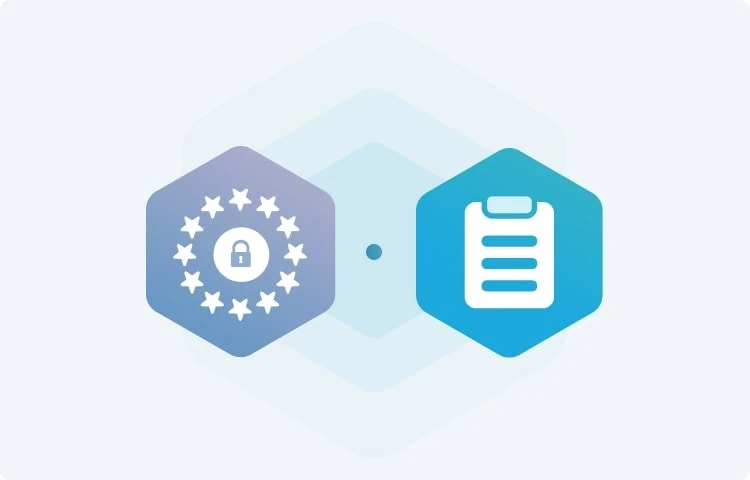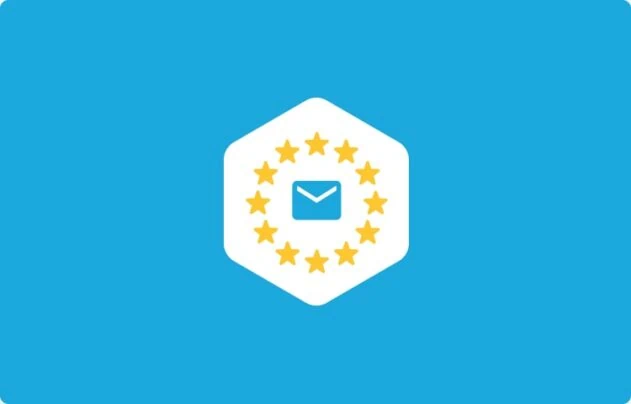Transparency is considered a key data protection principle in most data privacy laws. It is critical to ensure organizations remain accountable to their customers, users, and employees. It keeps organizations on their toes regarding their data processing activities and mandates them to keep their data subjects informed about how they collect and use their data as well as any consequences in relation to their data processing.
The EU's GDPR grants individuals the ‘Right to be Informed’ in Articles 12, 13 & 14, which is based on the principle of transparency. The principle of Transparency is also enshrined in Article 5(1)(a) of the GDPR, which requires the data processing to be lawful, fair, and transparent. Transparency can be achieved via providing a privacy notice to data subjects informing them how their data will be processed.
What is GDPR-Compliant Privacy Notice?
A privacy notice is a public statement addressed to data subjects outlining how an organization manages data subjects’ personal information and adheres to data protection legal requirements. In view of the transparency principle of the GDPR, a GDPR-compliant privacy notice must be:
- In a clear, visible, understandable, and readily available format,
- Written in easy and understandable language, especially for any information intended for children,
- Delivered promptly, and
- Provided free of charge.
As a good business practice, a privacy statement or policy should be posted on the homepage of the website or the mobile application. A privacy notice, on the other hand, may be promptly delivered to the data subject at or just before the point of collection of personal data from them.
The following information must be disclosed in an organization’s privacy notice if it is directly collecting data from an individual:
- The name and contact information for the company's representative, data protection officer, and other representatives,
- The purpose and the legal basis of the processing,
- The legitimate interests of the organization (or of the third party) where the processing is based on legitimate interests,
- Any recipient or categories of recipients of an individual’s personal data,
- The specifics of any overseas transfer of personal data and any possible risks to personal data,
- The period for which data will be stored or, if that is not possible, the criteria used to determine that period,
- The information about data subject rights and how they can exercise those rights,
- The right to revoke consent at any time (where the data processing is based on the data subject’s consent),
- The data subject’s right to complain to a supervisory authority, and
- The existence of automated decision-making, including profiling.
The same information must be included in an organization's privacy notice even if it obtained an individual’s data indirectly (via another organization). When personal data is not directly obtained from the data subject, the organization must also inform the data subject of the source of personal data and whether the data came from publicly available sources.
Primary Elements of Transparency Under GDPR
The GDPR does not define the term transparency in the official text. The definition and application of the concept of transparency in the context of data processing are explained in Recital 39 of the GDPR:
“It should be transparent to natural persons that personal data concerning them are collected, used, consulted, or otherwise processed and to what extent the personal data are or will be processed. The principle of transparency requires that any information and communication relating to the processing of those personal data be easily accessible and easy to understand and that clear and plain language be used. That principle concerns, in particular, information to the data subjects on the identity of the controller and the purposes of the processing and further information to ensure fair and transparent processing in respect of the natural persons concerned and their right to obtain confirmation and communication of personal data concerning them which are being processed.”
The GDPR-compliant privacy notice should ensure the following aspects:
Concise, Transparent, Intelligible, and Easily Accessible
Concise and Transparent
To minimize information overload, data controllers must convey information and communications in a "concise and transparent" manner. Instead of having to browse through a lot of information in an online setting in search of specific issues, a layered privacy notice will allow a data subject to navigate to the specific piece of the privacy notice they want to access right away.
Intelligible
The information must be "intelligible," which implies that it must be understandable to the typical member of the intended audience.
Easily Accessible
The "easily accessible" requirement states that the data subject should not have to look for the information; it should be immediately apparent to them where and how to access it, for example, by giving it to them directly, linking to it, clearly directing them there, or by providing the information as the response to a natural language question.
Clear and Plain Language
Best practices for clear writing should be observed when presenting written material (including when delivering written information verbally, visually, or by audio/visual means, even for persons with vision impairments).
Information should be delivered in the most straightforward manner possible, avoiding complicated sentence and language patterns, to comply with the criterion for clear and plain language. The information should be specific and unambiguous; it shouldn't be expressed in ambiguous or abstract words or allow for several interpretations.
When a data controller is directing their advertising at children or knows that their products/services target and are used by children frequently, it should make sure that the language's vocabulary, tone, and style are age-appropriate and can be easily understood by children and other vulnerable people.
In Writing or by Other Means
Under Article 12.1, the default position for providing information to, or communications with, data subjects is that the information is in writing. Data controllers are not limited to using digitally layered privacy statements and notices as their only written, electronic strategy. Other electronic tools may include, such as privacy dashboards, 3D touch or hover-over notices, and contextual pop-up notices.
When a data subject requests information, Article 12.1 expressly specifies that they may receive it verbally as long as their identity can be established in another way. To put it another way, the methods should go beyond relying solely on a person's assertions that they are a certain named person and allow the controller to confirm a data subject's identity confidently.
The oral communication of information required by Articles 13 and 14 does not always entail oral communication between individuals (i.e., in person or by telephone). It is possible to deliver automated oral information in addition to written information.
Free of Charge
Data controllers are typically prohibited from charging data subjects for the provision of information under Article 12.5. This element of transparency also means that no information provided in accordance with the standards for transparency may be contingent upon any financial transaction, such as the payment for or purchase of products or services.
How to Create a Privacy Notice
The GDPR-compliant privacy notice should include the following:
- Who is processing the data?
- What legal basis allows the business to collect users' personal data?
- What are the purposes and intentions of collecting users' personal data?
- What types of personal data would be collected from users, and who will be data recipients?
- How long will the business store the personal data of users?
- Will the personal data obtained from users be transferred across borders?
- Will the personal data obtained from users be used for automated decision-making?
- Will the personal data obtained from users be shared with any third parties?
- How can data subjects exercise their rights?
- Who are the businesses’ data controllers, and their contact information?
- Who are the businesses’ data protection officers, and what is their contact information?
While providing information on the data storage period, organizations must keep in consideration that they cannot keep the data longer than it is necessary for the stated purposes. Moreover, it is not sufficient to generically state that personal data will be kept as long as necessary for legitimate purposes. In fact, where relevant, the different storage periods should be stipulated for different categories of personal data and/or different processing purposes, including, where appropriate, archiving periods.
- If a data controller has obtained personal information directly from a data subject, it is only exempt from Article 13 duties "where and to the extent that the data subject already knows the information."
- In the case of personal data not directly collected from the data subject, the right to information may be limited if the provision of such information proves impossible or would involve disproportionate effort from the controller.
- In the case of personal data not directly collected from the data subject, the right to information will not be exercised in so far as the obligation is likely to render impossible or seriously impair the achievement of the objectives of that processing. In such a situation, the data controller must take appropriate measures to protect the data subject’s rights and freedoms and legitimate interests.
- The right to information may be limited based on a legal requirement or on the grounds of professional secrecy.
Automate Privacy Notices with Securiti
As the global digital landscape witnesses a drastic transition, businesses must become even more privacy-conscious of their operations and adopt proactive measures to ensure compliance with international data privacy laws. Businesses must honor data subject rights and ensure their customer's data's utmost security and privacy.
Regulations of the law must be followed to operationalize compliance and avoid penalties for noncompliance. Securiti assists businesses in their compliance obligations through state-of-the-art robotic automation.
Securiti’s Privacy Notice Management enables businesses to build and publish a privacy notice on their website in minutes. Organizations can regularly update their privacy notices along with several other policies, such as cookie policy, terms, and conditions.
Additionally, Securiti’s Privacy Center enables organizations to easily comply with a myriad of complex and evolving global privacy regulations while building trust with users. Securiti’s Privacy Center takes care of all the complexity by building a fully functional Privacy Center in minutes which can be linked to the organization’s website and App.
Securiti can help you comply with the GDPR, privacy notice requirements, and other international privacy and security standards. Build your privacy notice today for free with Securiti.
Request a demo today and learn how Securiti can help your GDPR compliance efforts.











